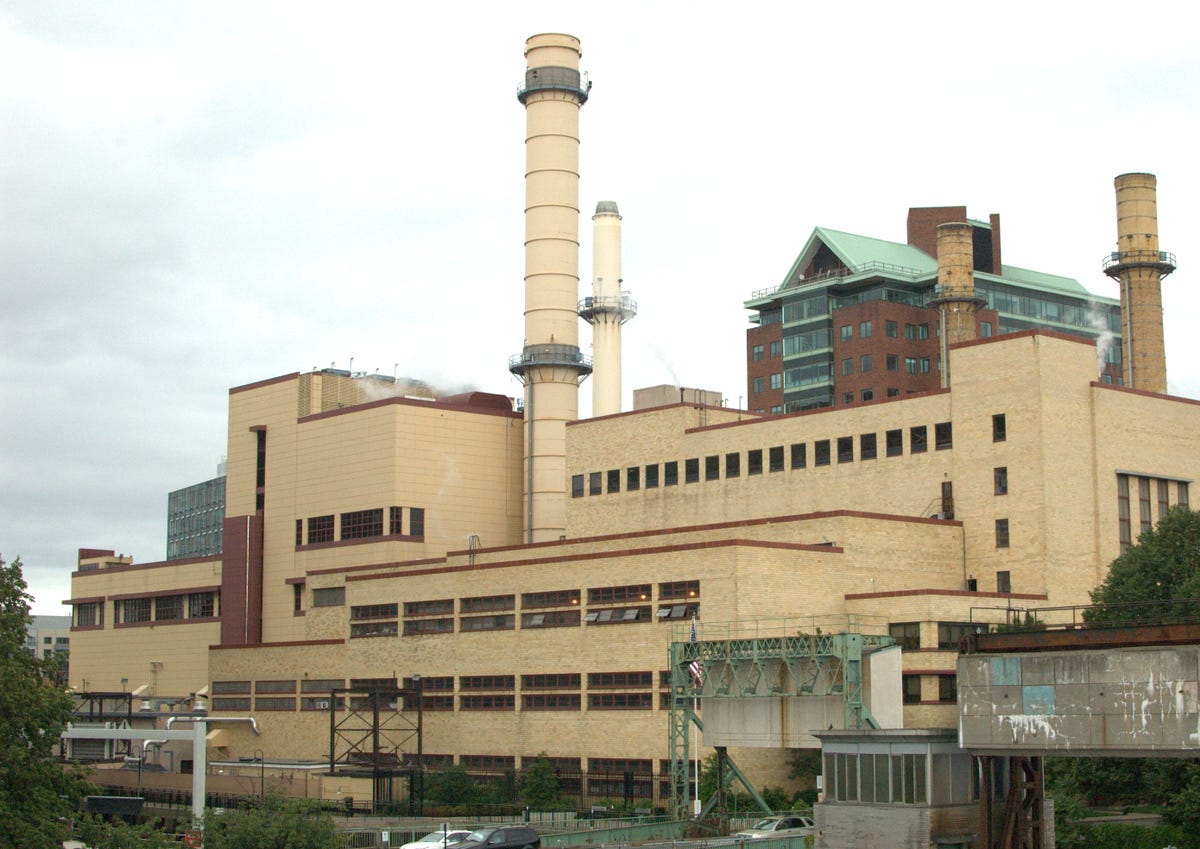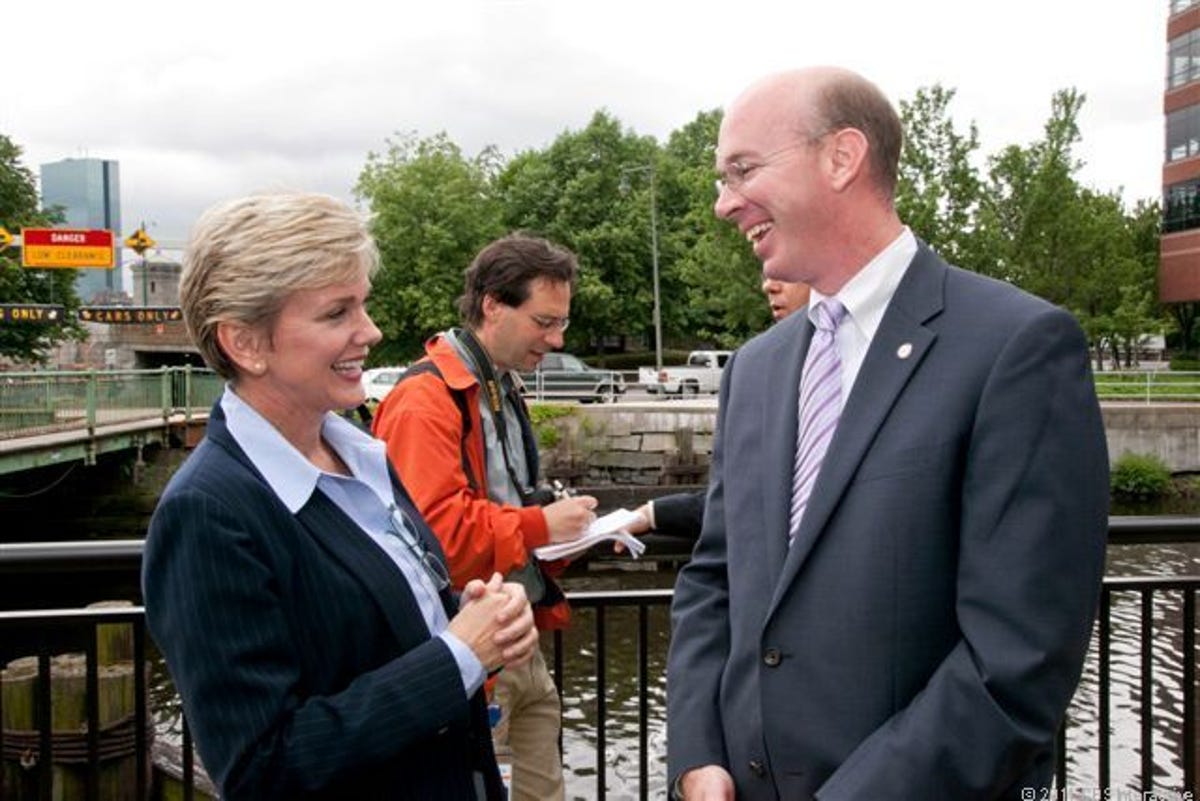Cogeneration goes underground for efficiency (images)
The Kendall Station, a fixture on the skyline near Boston, is an efficient combined heat and power plant that's tapping district heating to improve efficiency more than 90 percent.

Kendall Station CHP
If you've taken the subway from Boston to Cambridge over the Charles River, you've probably seen this yellow building. It's the Kendall Station, a medium size power plant that dates back to the 1940s. Still active, it was converted to natural gas and then upgraded to use waste heat from burning fuel for heating, making it relatively energy efficient combined heat and power, or cogeneration, facility. Now, the operators of the plant are partnering to use all the waste heat for commercial buildings in Cambridge and Boston. They plan to build a steam pipeline that will connect to the existing underground district heating network. The move will eliminate the hot water discharge into the river and boost the efficiency of the plant to over 90 percent, according to Veolia Energy and GenOn, which operate the plant.
Heat underground
District heating infrastructure has been around since the 19th century and is already built under many cities around the world. The idea is to have a cogeneration facility that generates both heat and power near an energy load in a city, campus, or region. Power is generated and fed to the grid, while the heat--in the form of steam--is fed into the underground network. France-based Veolia Energy owns and operates a number of district heating systems in the U.S. serving commercial customers, such as hospitals, universities, and high-rise buildings.
Power plant control room
Here's the scene inside the control room of the Kendall Station power plant. The electricity generated by the plant is sold into the wholesale market where the grid operator--New England ISO--manages the flow of power across the region. Operators need to ensure that they are staying up with requested demand--the maximum output of the plant is 256 megawatts. They monitor equipment, such as temperatures of generators, and other data such as the plant's emissions.
Piping
The view from inside the bowels of the Kendall Station, which generates both electricity and steam, making it more than 80 percent efficient. The plant opened in 1949 using coal as a fuel but was eventually switched to natural gas for electricity. Combined heat and power systems can be done at a smaller scale, supplying a university campus or industrial facility.
Gas turbines
These natural gas turbines (there are three altogether) are the workhorses of the power plant, burning natural gas to generate electricity. Where the Kendall Station is able to boost its efficiency significantly is by capturing the hot gases from the combustion to make steam. That steam is pumped through a district heating system for space heating in buildings. Right now, most of the heat is condensed back into water using water from the adjacent Charles River. The plant operator now plans to build another pipeline to use all the steam it creates.
Water discharge channel
Here's a view of the building that houses the heat recovery steam generator that creates steam from the gas turbines' waste heat. But since not all that heat can be used now, the plant pulls in millions of gallons of water per day from the Charles River to condense the steam. Then it discharges that hotter water into the river. The plant monitors water temperatures and how many dead fish there are per day, but the number has not gone over the limit of a few a day.

Granholm
The tour of the Kendall Station was organized Veolia Energy and plant operator GenOn for former Michigan governor Jennifer Granholm, who came to Massachusetts to investigate policies for promoting clean energy. Here she is speaking with Jim Hunt, the chief of Environmental and Energy Services, at the City of Boston Office of Environmental and Energy Services. Behind them is your intrepid reporter taking notes.
Water tower
The combined heat and power plant requires high-purity water to operate, which is stored in this tank and purified in the adjacent building. One of the buildings that receives steam from the facility is right behind this water tower--the Genzyme headquarters, which a LEED-certified platinum building.

